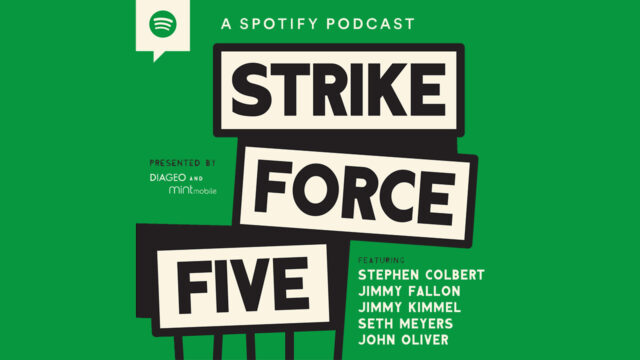You’ve likely seen the social media pictures: old guys, very angry, eyes ablaze, nostrils flaring, pointing fingers, threatening someone. The ridiculousness of the imagery lent itself to natural viral status and the countless memes that followed.
But it does raise an interesting question: Why are these old Boomers so angry?
First off, the pictures are indeed funny: they practically look the same, with the invariably ludicrous expression on their faces: practically of uniform senior citizen age group (nearing retirement or recently retired), fat bellied, flabby mouthed, balding or nearly bald.
Yet it is also the somewhat identical personality of the objects of their ire that perhaps is the more telling: young men, slim, fit, relatively materially comfortable, mobile, with all the articulate confidence of today’s youth.
Which in a way explains the obvious insanity of those Boomers’ responses. After all, while indeed talkative young men who answer back with all their ignorance and inexperience, annoying young drivers, and obnoxious cyclists perhaps do deserve a dressing down, no sane world would ever consider the shooting of them dead or having a gun pulled on them as remotely acceptable.
And yet social media seems to indicate a proliferation of such instances. Is there really some sort of animosity between Boomers and Millennials (including Gen Zs)? According to science (a term, ironically enough, beloved of Boomers, particularly during the pandemic lockdowns), the answer seems to be: Yes.
Mind you, this discussion of course will deal with generalizations. Which logically means that we’re talking of just enough to merit observation but definitely not declaring its applicability to all. To reword it more emphatically: while there may be some indications of Boomer hostility towards the young, it does not mean that all Boomers do or that most of them will act on that hostility.
With that, one recent study (“Millennials Versus Boomers: An Asymmetric Pattern of Realistic and Symbolic Threats Drives Intergenerational Tensions in the United States,” S. Francioli, et. al., May 2023, pubmed.ncbi.nlm.nhi.gov/37133238/) found indeed that “Millennials and Baby Boomers do express more animosity toward each other than toward other generations.” One reason is traceable to the fact that “many Baby Boomers have expressed the desire to remain in the workforce longer and some see Millennials — viewed by employers as cheaper and more adaptable — as standing in their way.” In this regard, it’s safe to say that not only Millennials and Gen Z but also the normally quiet Gen X do find the “Baby Boomers’s delayed transmission of power hamper[ing] their life prospects.”
Even more significant is that Baby Boomers see themselves as possessed of iconic status, supposedly one of the greatest generations in history, and thus view the younger generations’ insufficient reverence towards them a deep insult to their “cultural legacy.” “Older generations often expect younger ones to respect, honor, and preserve their way of life, a desire potentially amplified as one’s generation approaches an unavoidable numerical decline. In a context where Millennials have long been depicted as challenging the norms and values of previous generations, Baby Boomers may see Millennials as a threat to the cultural imprint they wish to leave.” For that reason, such “symbolic concerns” constitute a “primary driver of Baby Boomers’s hostility toward Millennials.”
Yet one can’t help but also feel that beneath all this is a foundation consisting of entitlement and self-centeredness. Hence, one commentary (“Why Are Baby Boomers So Angry?,” VanNatta Public Relations, February 2020) pointed to the fact that, after six long decades of the 1950s-60s Generation calling attention to themselves and how cool the hippie and disco eras were, they are now “angry” because they feel they’re “missing out.” On “fun, vacations, and buying nice things [that] had been delayed until there was enough money to help children with school and pay off bills. Now Boomers are faced with their own health issues, elderly parents, and/or young adult children in need — further delaying dreams.”
This problem is exacerbated when such narcissism leaks into the realm of public policy. The bizarrely nonsensical two-plus year total lockdown happened, in part, because of the reluctance to craft a policy that recognizes the fact that COVID-19 seriously affects those 60 years old and above (as well as those with comorbidities), while generally leaving the healthy 20-year-olds and below practically unscathed. Hence, when “major media have reported experts’ warnings that the elderly, starting at age 60, are extra vulnerable,” the reaction from that age range was almost of collective horror: “Wait, what? I’m in a high-risk group? I’m perceived as elderly?” (“With the novel coronavirus, suddenly at 60 we’re now ‘old’,” The Washington Post, June 2020).
So, while socio-political commentaries can point to the rise of criminality, lack of accountability, government corruption, an elitist class system protective of the establishment, while lectures can be made about the deteriorating social contract amidst a cramped urban landscape beset by a polluted environment, perhaps the story is simple as it is pathetically banal.
Of the formerly young, previously the center of attention in their family, barkada, barangay, or college, who used to lord it over the dance floors of old, considered honored guests for whatever government or business position they had, now suddenly seeing themselves passed over, of promotions that never came, more and more being ignored, no more the honored seat at parties, no more the obsequious speeches thanking them during gatherings, as the younger, healthy, and able Millennials and Gen Zs pass them by and suck the attention away from them.
Sooner or later the Boomers know they’ll have to step aside for a generation they perceive as having grown up amidst ease and comfort, with all the amenities of social media, tech gadgets, choice consumer goods, on demand gratification, with greater opportunity for travel, or simply just greater opportunities.
Hence, the nearly deranged disproportionate reactions: the lashing out, the lashing out at the young that will taste the pleasures such Boomers feel they’re now deprived of, the lashing out at supposedly not being given the deference or respect they oddly think they deserve, the lashing out at a society they believe has not rewarded them enough and is now unceremoniously setting them aside.
To that, perhaps the only proper response is: Oh, grow up!
Jemy Gatdula is a senior fellow of the Philippine Council for Foreign Relations and a Philippine Judicial Academy law lecturer for constitutional philosophy and jurisprudence
https://www.facebook.com/jigatdula/
Twitter @jemygatdula















